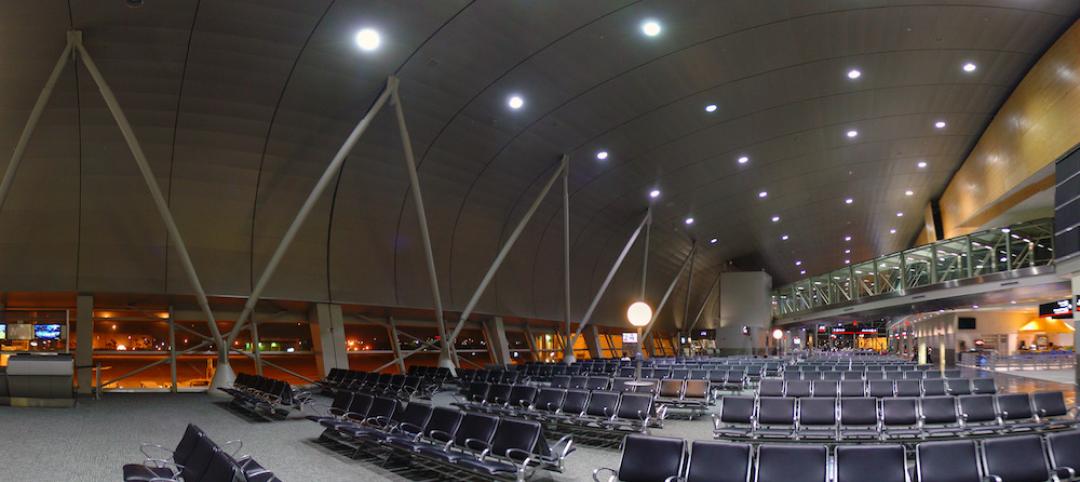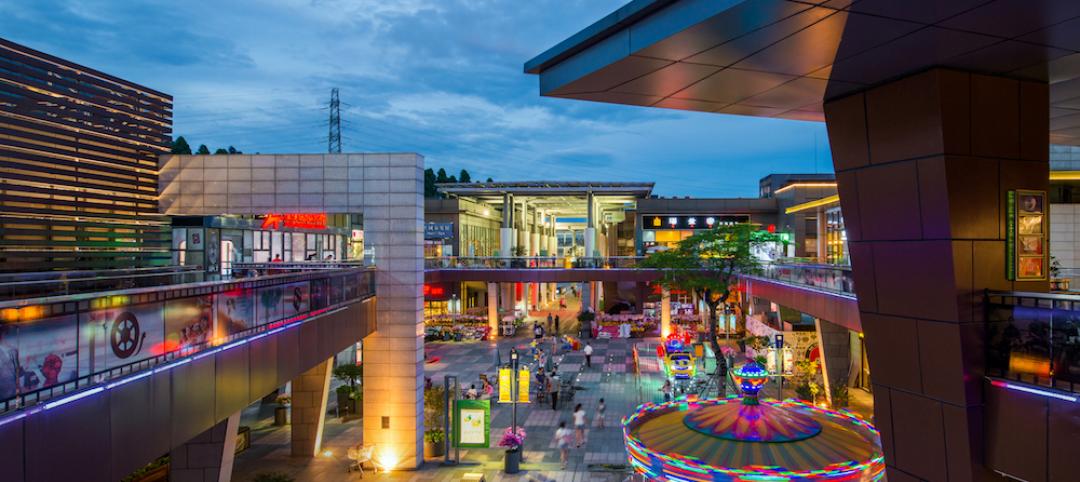Military and government clients—federal, state, and local—have been strong advocates of green building for more than a decade. They see sustainable design as vital to cost savings, as well as fulfilling their mission to minimize the impact on the environment.
On the military front, consider the New Hampshire Air National Guard Operations and Training Facility, located on the Pease Air National Guard Base at Portsmouth International Airport. The Building Team of P&S Construction (GC) and Science Applications International Corp. was able to achieve LEED Gold for the client. Sustainable strategies included minimizing solar heat gain on the roof and window exposures, installing a heat pump system, and specifying water-efficient plumbing fixtures that met maintenance requirements.
Last year, the U.S. Marine Corps Base Camp Pendleton in California became home to the first LEED Platinum U.S. Marine building, the Wounded Warrior Barracks, designed by Cass, Sowatsky, Chapman & Associates and built by Balfour Beatty via design/build delivery for the Naval Facilities Engineering Command.
This year, Balfour Beatty completed construction of two new Platinum buildings—the Wounded Warrior Headquarters Building and the Hope and Care Center (photo, page 38)—at the Wounded Warrior West Coast headquarters location at Camp Pendleton. The two buildings are expected to reduce annual water use by 84,000 gallons and provide energy savings of more than $52,000 annually.
At the federal level, the Marine Research and Education Center at the Salt River Bay National Park and History Preserve on the island of St. Croix, V.I., takes an in-depth approach to water conservation in its design.
A 60,000-sf facility dedicated to the study and education of marine ecosystems, this net-zero water and energy project will treat all wastewater on site. One hundred percent of water usage will be collected from rainwater, thus enabling the project to target both LEED Gold and at least three petals under Living Building Challenge guidelines.
Water conservation and reuse is also a major sustainable feature at the Federal Center South Building 1202 in Seattle. Designed by ZGF Architects and constructed by Heery International, the LEED Gold-targeted, 209,000-sf converted warehouse houses a 25,000-gallon concrete cistern for capturing rainwater for reuse in irrigation and toilet use throughout the facility.
At the U.S. Customs Field Operations Facility in Sells, Ariz., architectural shading and drought-tolerant and native landscaping allows for a 45% savings in water over a comparable building. The 10,092-sf expansion earned LEED Silver, thanks to the efforts of its Building Team: Green Ideas Sustainability Consultants, Davis Enterprises, Acceleration Construction Technologies, and Logan E. Van Sittert Architects.
A major contributor to that rating was the team’s prefabrication strategy. Sixty percent of the building was prefabricated offsite and delivered in 12 modular units, reducing construction waste by 89% and minimizing habitat disturbance.
The NASA Langley Research Center Headquarters in Hampton, Va., was constructed as part of Langley’s 15-year New Town Strategic Concept Plan, which is designed to create modernized facilities while developing cost-effective strategies.
Using sustainable techniques, Hill International, along with Whiting-Turner Contracting, was able to modernize the design while incorporating green products to save energy and lower costs. The team was originally shooting for LEED Gold, but was happy to learn the project had achieved Platinum status.
Builders and designers are also employing green methods for buildings at the state and local level, many of which begin on the roof.
At the Johnson County Criminalistics Lab in Olathe, Kan., a 1,100-sf vegetative roofing system sits atop the LEED Platinum building. The roof’s membrane also houses photovoltaic panels, making it an onsite renewable energy source.
A 15,000-sf 911 facility in Morris, Ill., designed and built by Wight & Co., received the 2011 Excellence in Engineering Award from the Illinois chapter of ASHRAE. The building’s only source of heating and cooling comes from a ground-loop geothermal system, where heat generated by the mission critical facility’s computer system is captured to heat the building.
In Alexandria, Va., the city’s Public Safety Headquarters was rated LEED Gold (v2.2). Pipes from the HVAC system conduct condensate into the facility’s 30,000-gallon cistern to assist with irrigation, reducing the building’s potable water use by 30%. Designed by HDR Architecture and constructed by the Whiting-Turner Contracting Co., 64% of the building is daylit, including the atrium, first-floor offices, and basement open office areas.
Sustainable design has even penetrated the wastewater industry. The King County Department of Natural Resources and Parks earned LEED Platinum for the Brightwater Environmental Education and Community Center, Woodinville, Wash.
Designed by MITHUN (with Streeter and Associates), engineered by CH2M Hill and Brown and Caldwell, and built by Hoffman Construction, the 15,0000-sf center functions on the resources generated from the adjacent wastewater treatment plant, harnessing methane for heat and using reclaimed water for toilets and irrigation.
Mortenson Construction used similar processes at the Chambers Creek Regional Wastewater Facility in Pierce County, Wash., where waste-to-energy is used to heat the plant year-round, while yielding 40 dry tons of fertilizer per week. +
Related Stories
| Aug 4, 2016
Top 110 Multifamily Architecture Firms
Perkins Eastman, CallisonRTKL, and Solomon Cordwell Buenz top Building Design+Construction’s annual ranking of the nation’s largest multifamily building sector architecture and A/E firms, as reported in the 2016 Giants 300 Report.
| Aug 3, 2016
GREEN BUILDING GIANTS: Sustainability leaders turn to wellness and technology to get an edge
AEC leaders in green building are stepping up to a higher level of innovation and to be a green leader today, you have to dig deeper into data.
| Aug 2, 2016
Top 130 Green Building Architecture Firms
Gensler, Stantec, and HOK top Building Design+Construction’s annual ranking of the nation’s largest green building sector architecture and A/E firms, as reported in the 2016 Giants 300 Report.
Architects | Aug 2, 2016
Bradley Lukanic named CannonDesign's CEO
In his new role, Lukanic takes helm of an experienced leadership team crafting and achieving optimal short- and long-term strategies and business outcomes
| Aug 1, 2016
K-12 SCHOOL GIANTS: In a new era of K-12 education, flexibility is crucial to design
Space flexibility is critical to classroom design. Spaces have to be adaptable, even allowing for drastic changes such as a doubling of classroom size.
| Jul 29, 2016
AIRPORT FACILITIES GIANTS: Airports binge on construction during busy year for travel
Terminal construction will grow by nearly $1 billion this year, and it will keep increasing. Airports are expanding and modernizing their facilities to keep passengers moving.
| Jul 29, 2016
Top 35 Airport Terminal Architecture and A/E Firms
Corgan, HOK, and Gensler top Building Design+Construction’s annual ranking of the nation’s largest airport terminal architecture and A/E firms, as reported in the 2016 Giants 300 Report.
Architects | Jul 28, 2016
Connecting the dots: Architecture and design in a changing world
What do Tesla, Airbnb and Amazon have in common? They’re all shifting the paradigm for quality of life and the built environment, as CallisonRTKL senior associate VP Jayson Lee explains.
| Jul 26, 2016
ENGINEERING GIANTS: Firms continue to push innovation
Trends include 3D printing, modular hospitals, and fluid dampers.
| Jul 26, 2016
Top 80 Architecture/Engineering firms
Stantec, HOK, and Callison RTKL once again top Building Design+Construction's 2016 ranking of the largest architecture/engineering firms in the United States.

















